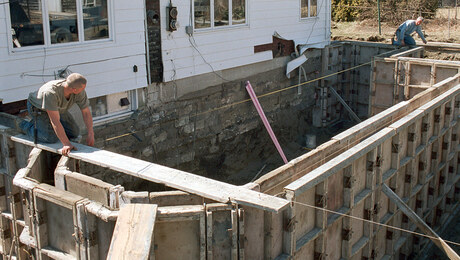I recently purchased an older home built in 1900. It has plaster walls with several coats of both paint and wallpaper. The walls needed to be refinished because the paper was partially coming off the wall and where it wasn’t, you can see the paper seams. I thought I could get away with scoring the old paper and using a solvent spray to remove the old paper, followed by a good patch up, prime and paint. What I uncovered on my first small wall, beneath the paper, was a wall with a lot of hairline cracks. The plaster is not coming away from the lath, rather the lath is flexible. When I push on it gives.
I know of two ways to go wrestle this animal. First to knock all the plaster and lath from the walls and drywall. This is more job than I can personally handle. Secondly, I could just throw a coat of paint on it and let bye gons be bye gons. This would probably keep me up at night.
I don’t have the experience working with this type of older construction. Is there any one with a solution which bridges the two.
JD
Discussion Forum
Discussion Forum
Up Next
Video Shorts
Featured Story

There are a number of ways to achieve a level foundation and mudsill.
Featured Video
Video: Build a Fireplace, Brick by BrickHighlights
"I have learned so much thanks to the searchable articles on the FHB website. I can confidently say that I expect to be a life-long subscriber." - M.K.

















Replies
Sometimes, you caan put a layer of 1/4" or 3/8" sheetrock over the plaster and finsih it. There is also a web reinforcing fabric that can be applied over all and skim coated to reinforce the plaster. A lot depends on how well adhered the old wallpaper is. Stick something to it and it could come right off again.
Excellence is its own reward!
or..U could pull all the paper...
then use "structural paper".....it probably has a real name....that's just what we call it.
It's a heavy duty wall paper.....comes with a slightly embossed pattern. Applies pretty much like regular wall paper....except this stuff should be painted.
When we used to do lotsa rental rehabs...this was standard fare. Get the walls as clean as possible.....patch in any holes or major cracks........then paper and paint.
The end result is a nice almost period looking detail. The embossed pattern is just enough to help hide any imperfections it's hiding beneath.
Ask around at a real wall covering store......this description should get ya what you want.
Try to leave the plaster as intack as possible....especially around the trim.....especially if the trim is burried in the plaster. Screw tight anything lose before ya cover it up.....spackle everything as flat as possible..then paper and paint.
Jeff
Buck Construction Pittsburgh,PA
Fine Carpentery.....While U Waite
I hate to say it, but if your description of the lath condition is correct, nothing's going to be a permanent fix. How much is the lath flexing?
From all the plaster work I've ever seen, if it's been done correctly on metal lath with a proper application, you shouldn't be able to flex it unless you hit it really hard (thereby fracturing the plaster). In your case, I'm questioning how well the lath is attached to the studs and/or how the plastering was done (i.e. thickness, materials used, etc).
If you hadn't mentioned about the lath, a good way to take care of cracks is to gouge them out with a utility knife, screwdriver, etc, use fiberglass tape, and apply a setting joint compound such as Durabond. (You should wet the existing plaster first or use a product such as Plasterweld). It's labor intensive, but makes for a good repair.
To me, a flexible wall = constant paint failure. It's not a matter of if, but when. Joint compound will only add to the problem as it won't flex like a latex paint may.